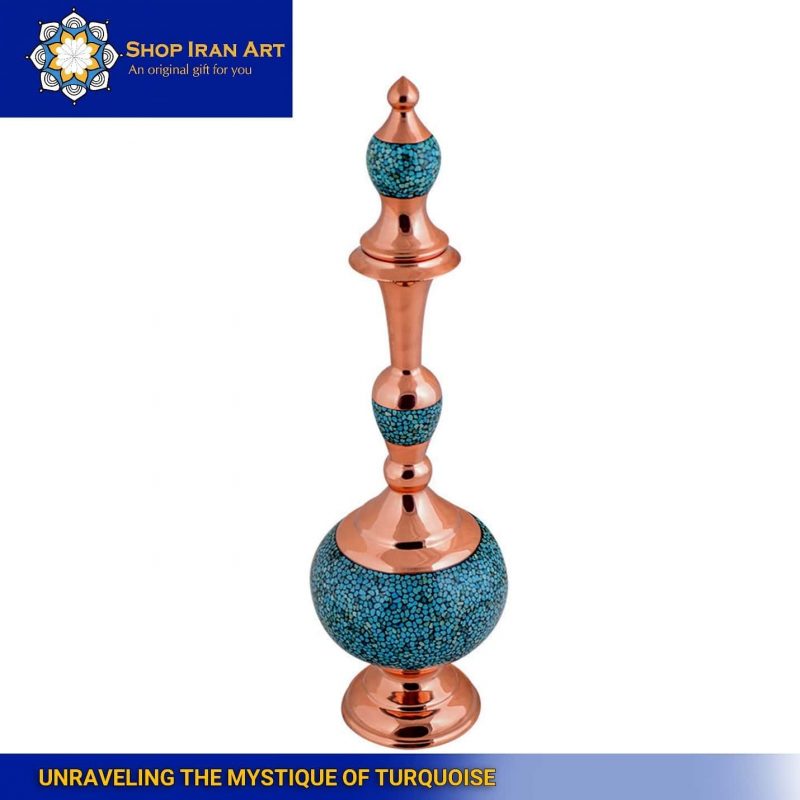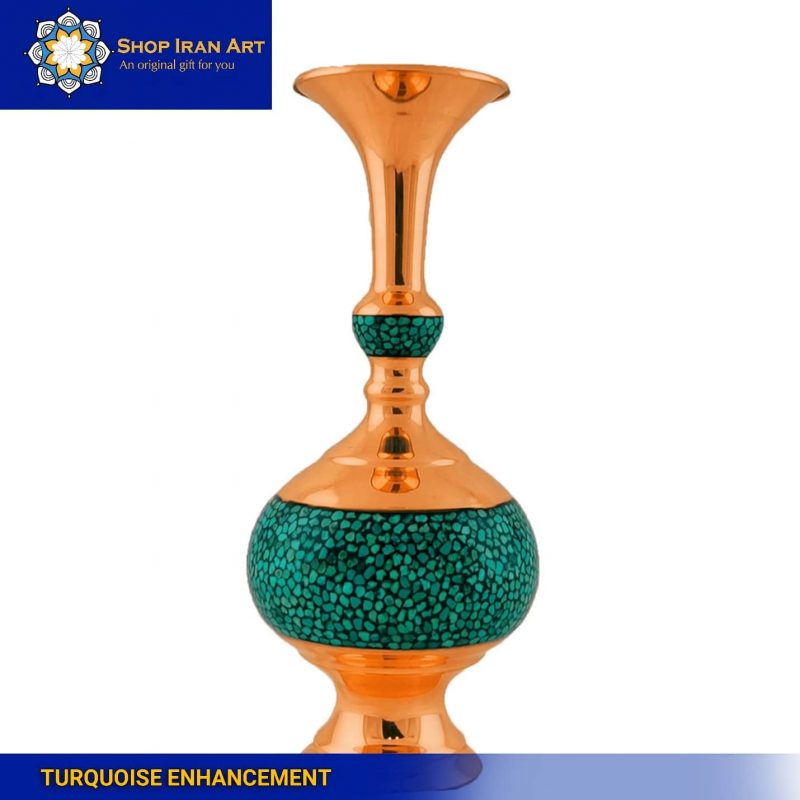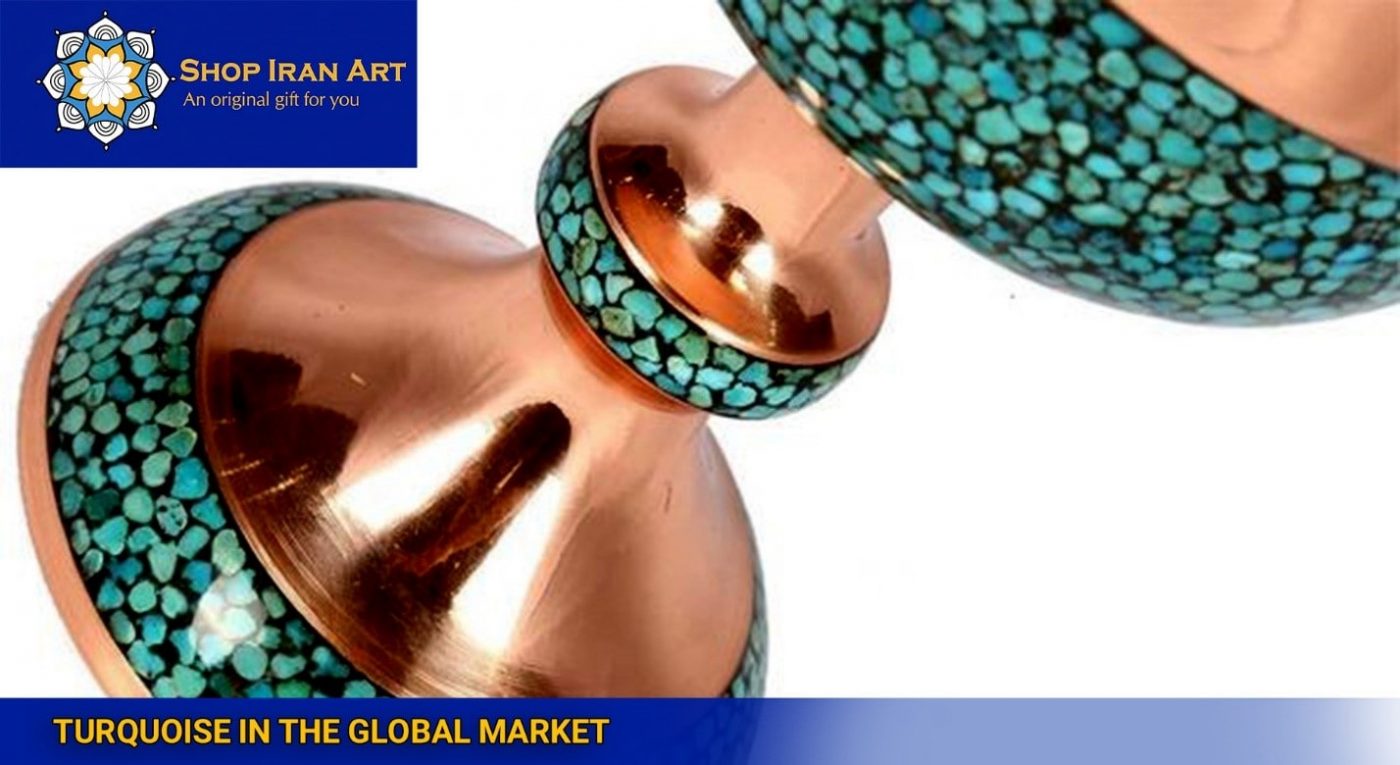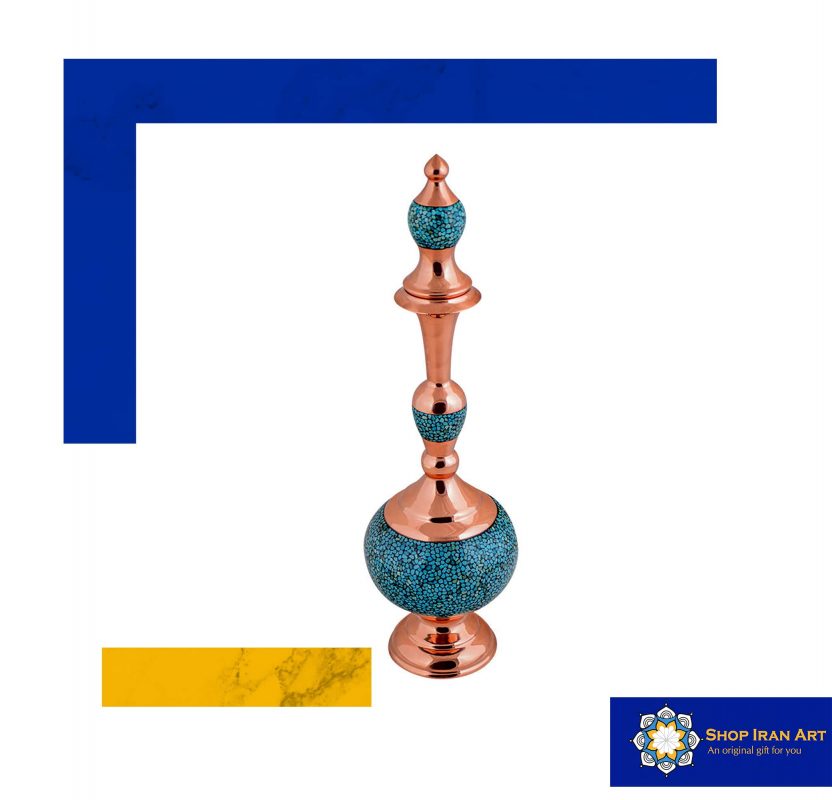Sin categorizar
Turquoise Where Does It Come From
Turquoise Where Does It Come From
Turquoise, with its captivating allure, has mesmerized humanity throughout the ages. This exquisite gemstone, known for its striking blue-green hue, possesses many unique properties, making it a coveted treasure for jewelry enthusiasts and artists seeking decorative inspiration.
Geologically, turquoise is formed through an exciting dance between water and minerals. Over thousands of years, water containing copper and aluminum phosphates seeps into rocks and interacts with other minerals such as iron and manganese.
Unraveling the Mystique of Turquoise
Conversely, the Persians believed turquoise could ward off evil and bring peace of mind. Native American tribes such as the Navajo and Pueblo regarded turquoise as a symbol of wisdom, protection, and a spiritual connection with nature.

Beyond its cultural significance, turquoise possesses a striking, captivating, and soothing beauty. Its color palette encompasses a range of shades, from delicate sky blues to vibrant teals and deep greens. This unique blend arises from the stone’s formation process, which occurs when copper and aluminum minerals react with water containing phosphates and other elements.
Geological Formation
Turquoise, a captivating gemstone, undergoes a truly mesmerizing process from the magnetic interaction between copper-rich fluids and unique rock formations. Its formation is intricately tied to specific geological conditions, predominantly observed in arid regions. This magnificent gem closely connects with copper deposits and the fiery forces of volcanic activity.
The first chapter in this captivating story involves the presence of copper deposits. Copper, a remarkable element revered for its electrical conductivity and striking hue, plays a pivotal role in the turquoise formation. Over time, copper-rich fluids find their way into the surrounding rocks, carrying with them dissolved copper compounds.
Ancient Connections
Few gems throughout human history have captivated the human imagination and held more cultural significance than turquoise. From ancient civilizations to sacred rituals worldwide, this vibrant blue-green gemstone has always played an essential role in the fabric of human existence.
The allure of turquoise can be traced back to the earliest recorded civilizations. They believed that turquoise possessed protective qualities, shielding them from harm and warding off evil spirits. Turquoise became a coveted adornment, gracing the necks, wrists, and fingers of pharaohs, queens, and noble elites.
Cultural Significance
Turquoise holds deep cultural significance across various societies. Its symbolic meanings differ across cultures, ranging from wisdom and immortality to good fortune and love. Discovering the diverse beliefs and symbolism associated with turquoise reveals its profound impact on humanity’s collective consciousness.
Mining Turquoise
Mining turquoise is an exciting and complex undertaking requiring detailed steps, including the exploration of deposits, the extraction of this magnificent gemstone, and the meticulous preparations necessary to reveal its true beauty.
The journey begins with the exploration and location of turquoise deposits. Geologists, mining experts, and passionate prospectors meticulously survey the Earth’s surface, utilizing historical data, geological formations, and cutting-edge technology to identify potential mining sites. This process often involves comprehensive research, analyzing geological maps, and even aerial surveys to pinpoint areas that promise turquoise riches.
Popular Varieties
Turquoise exhibits various captivating colors and patterns, resulting in various sought-after varieties. From the vibrant Persian turquoise to the striking Sleeping Beauty turquoise, each type possesses unique characteristics and visual appeal. Let’s delve into the world of turquoise varieties and appreciate the beauty they offer.

Turquoise Enhancement
In the quest to enhance turquoise’s natural beauty, specific treatments and enhancements are employed. These processes aim to improve the gemstone’s color, stability, and appearance. Understanding the different enhancement techniques empowers buyers and ensures informed choices.
Caring for Turquoise
Proper care and maintenance are essential for preserving the vibrant allure of turquoise. As a relatively soft gemstone, turquoise requires gentle handling and protection from harsh chemicals and extreme temperatures. By following a few simple guidelines, you can ensure your turquoise jewelry remains radiant for years.
Turquoise in Fashion
Turquoise has long been a staple in the fashion industry, adorning accessories, clothing, and even makeup. Its versatility allows endless styling possibilities, from bohemian chic to sophisticated elegance. Discover the fashion-forward allure of turquoise and how it continues to shape trends in the ever-evolving fashion world.
The Therapeutic Power of Turquoise
Turquoise is a stunning gemstone that has been esteemed for its purported healing properties for centuries. This beautiful stone is believed to possess many benefits that promote emotional balance, enhance communication, and protect against negativity.
It is a gemstone with a long and fascinating history dating back thousands of years. It has been highly prized for its beauty and alleged healing properties by numerous historical cultures, including the ancient Egyptians, Persians, and Native Americans.
Turquoise Legends and Folklore
Over time, turquoise has become the subject of numerous legends and folklore, woven into tales of magical powers and protection. These stories span cultures and epochs, enchanting listeners with the mystical qualities attributed to turquoise. Delve into the captivating realm of turquoise folklore and immerse yourself in its magical allure.
Investing in Turquoise
As the demand for turquoise grows, it has become an appealing option for gemstone investors. Understanding the factors that influence turquoise’s value and recognizing the hallmarks of quality empowers investors to make informed decisions. Discover the world of turquoise investments and the potential it holds.
Turquoise in the Global Market
The global market for turquoise is evolving, driven by shifting trends and growing consumer interest. New sources are being discovered while innovative designs and applications continue to emerge. We are examining the prospects of turquoise sheds light on the gemstone’s trajectory in a dynamic and ever-expanding market.

Shop Iran Art offers a Turquoise collection of exquisite artworks that celebrate the rich cultural heritage of Iran. From traditional Persian calligraphy to contemporary masterpieces, the platform provides art enthusiasts with a gateway to explore and acquire stunning pieces that reflect the artistic brilliance of Iran.
Conclusion
Turquoise is a gemstone that has captured the imagination of people for centuries. Its timeless beauty, and cultural importance have made it a famous stone for jewelry and decorative use. It is formed from a complex chemical process in geological formations, adding to its mystique and allure.
How is turquoise mined?
Open-pit mining removes the top layer of soil to access the deposit, while underground mining involves digging tunnels or shafts to extract the rock.
What are some famous sources of turquoise?
Arizona, Iran, Egypt, and China.
How is turquoise used?
It is used in jewelry, decorative objects, and as a painting pigment. It's also used in spiritual practices and ceremonies and is believed by some to have healing and protective properties.




